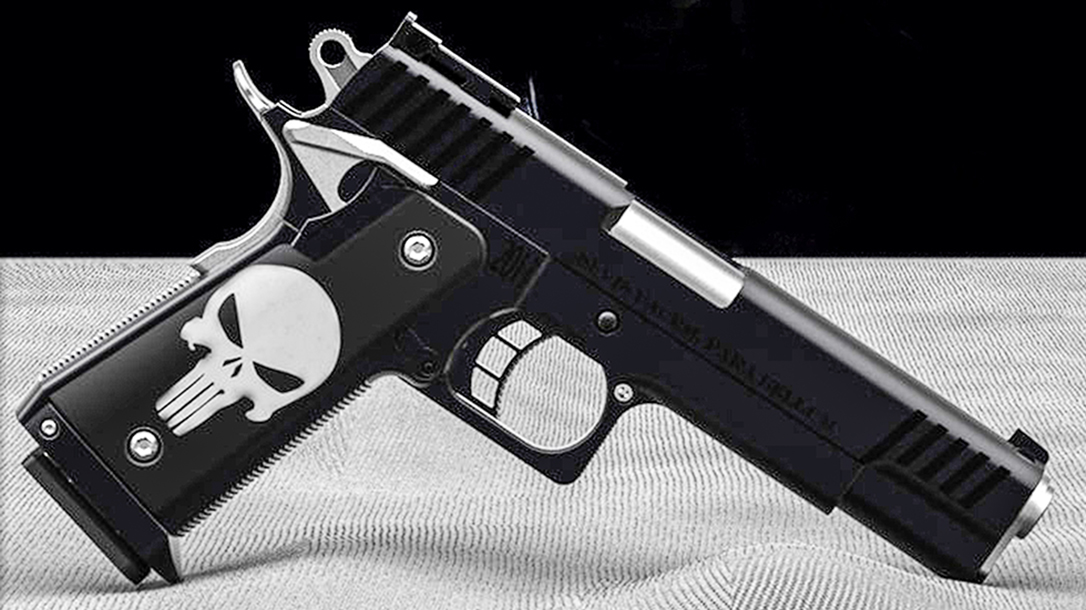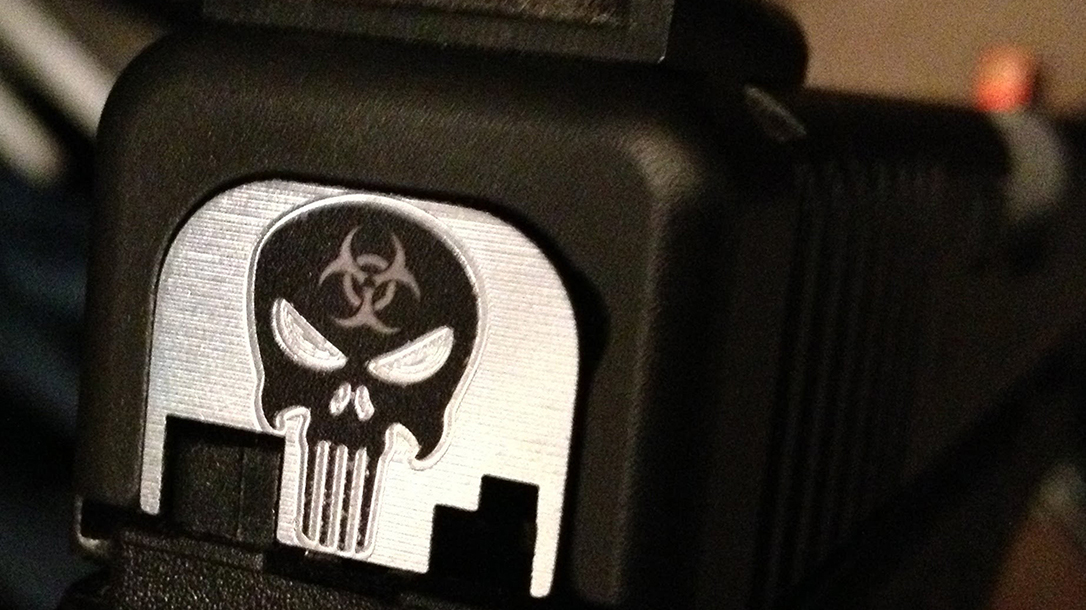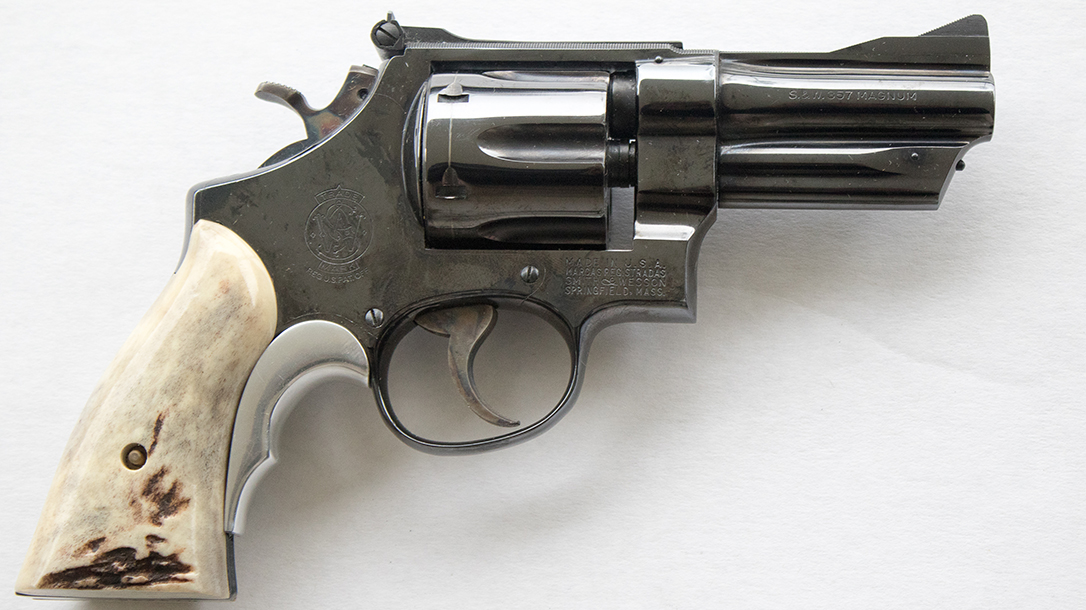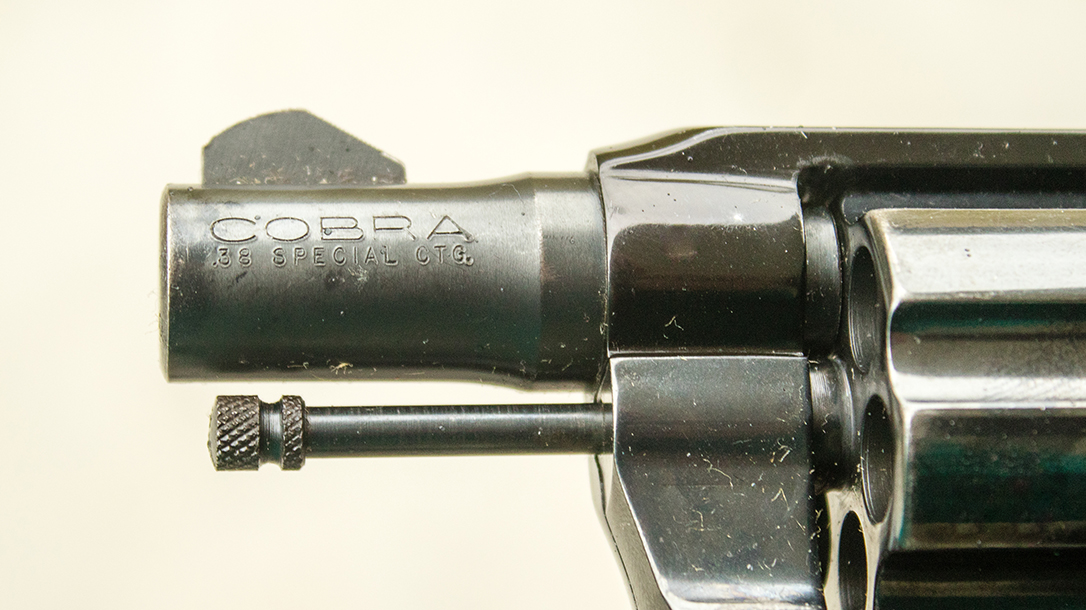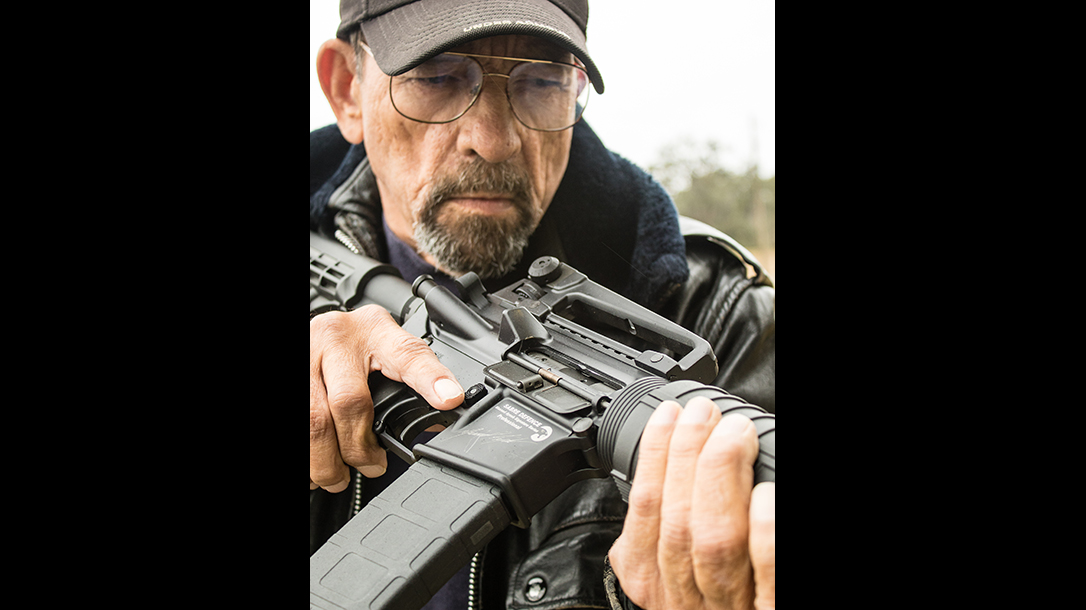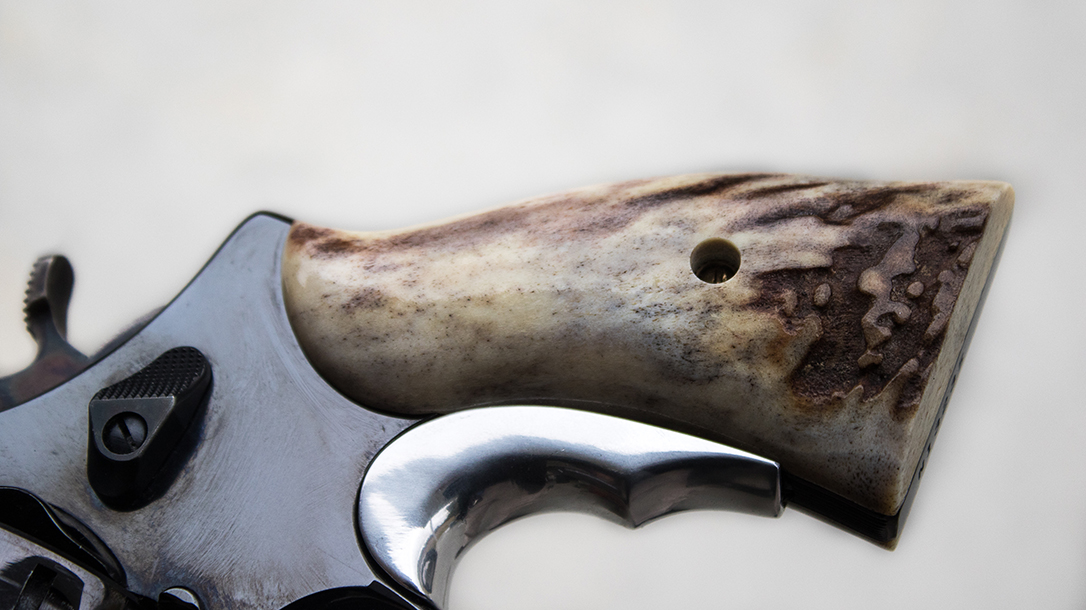Editor’s note: We at Personal Defense World know full well that a gun’s paint job, engraving and the like have no bearing on a person’s mindset during a self-defense encounter, a day at the range or anytime for that matter. Just like listening to heavy metal music or having arms covered in tattoos doesn’t make you a card-carrying member of a murderous cult.
The shooter’s state of mind is a critical issue in shooting cases. It can make the difference between murder, manslaughter, excusable homicide and justifiable homicide. Prosecutors in criminal cases and plaintiff’s bar in civil lawsuits are well aware that for generations, the American public—the jury pool—has been brainwashed against gun owners by anti-gun media and politicians. It should come as no surprise when those trying to pillory the shooter claim that his gun was extra deadly. Consequently, they’ll claim the defendant must be extra dangerous to the public at large.
Advertisement — Continue Reading Below
It doesn’t help when the everyday-carry gun involved is emblazoned with words or images that would seem reckless or bloodthirsty to the average non-gun person. Simply put, the optics of it all don’t look good. The example most often cited in gun forum discussions is The Punisher skull. It’s the icon of a comic book character, a vigilante who slaughters “bad guys.”
The Punisher skull has become a legal matter in another respect. The character belongs to Marvel Comics, and Marvel has taken a dim view of it being appropriated by other companies.
Poor Taste
Inflammatory gun decorations hit the news in the fourth quarter of 2017 in Case One, Arizona v. Philip Brailsford. The defendant was one of several Mesa Police officers who responded in January 2016 to a call reporting a man with a gun in the fifth-floor window of a local hotel. Prone in the hall outside his room, and ordered to crawl toward the officers and not reach toward his back or be shot, bodycams captured the suspect suddenly reaching toward his back. That’s when Brailsford fired five .223 rounds, killing him. Much of the public saw it as a helpless drunk who turned out to be unarmed, and screamed, “Murder!” So did the prosecutor’s office.
Advertisement — Continue Reading Below
Brailsford’s accusers made a huge deal out of the words “You’re F***ed” etched on the inside of his AR-15’s dust cover. They claimed it showed him to be bloodthirsty. This ignored the fact that no sane person would knowingly shoot an unarmed man in front of several witnesses and body cameras, including his own.
Verdict
Often, issues like “he had hollow points” or “he owned too many guns” or “his gun was a nasty one instead of a nice Elmer Fudd one” can be killed early in motions in limine. These are pre-trial motions where the judge determines what evidence will be allowed in front of the jury. The test is a balance of probative value (i.e., will this evidence help the jury find the truth of the matter) versus prejudicial potential (“Your Honor, opposing counsel is only using this to inflame the passions of the jury against my client”). In this case, the defense prevailed, and the slogan on the dust cover was kept out. The jury found Brailsford not guilty of the murder charge, the lesser included manslaughter charge or anything else.
Some on the internet have already taken this to mean that inflammatory words or symbols on a gun don’t matter. This is far from the truth. I would expect that it cost many thousands of dollars in legal fees and trial prep for the defense to prevail in that particular motion in limine. The slogan on the gun helped convince prosecutors to bring the murder charge in the first place. And it cost the officer his job.
Advertisement — Continue Reading Below
Post-Acquittal
After the acquittal, the Phoenix New Times reported, “Mesa Police fired Brailsford a few weeks later for performance issues, and also because the officer had ‘You’re F***ed’ engraved on his rifle’s dust cover. (Apparently, that hadn’t been seen as a problem before the shooting.) He had been with the force almost three years.” Fired over an etching on a gun? AZCentral reported, “Brailsford was fired by the Mesa Police Department on March 21 in connection with the fatal shooting.
“The department also cited an inappropriate etching on Brailsford’s AR-15 patrol rifle as a violation of the department’s service weapons policy. Records released Tuesday offered more information on the etchings. ‘You’re F***ed’ was etched onto Brailsford’s weapon, an internal investigation report stated. In addition, an investigator found the words ‘molon labe‘ engraved on the outside dust cover. The Greek words, a classical expression of defiance, loosely translate to ‘come and take them.'”
Ignored in all this apparently was the fact that the only person who would ever see the logo on the inside of the dust cover would be the shooter when he looked down to see why his AR-15 had stopped working. It would be a reminder to keep his weapon properly lubed and maintained. This is a lifesaving rescue tool for himself, brother and sister officers, and the public he was sworn to protect. I don’t know if the defense used that argument to win the motion in limine, but I hope they did.
Advertisement — Continue Reading Below
Gun Decorations: Related Cases
Noted defensive firearms instructor Marty Hayes, the founder of the first post-self-defense legal support group, the Armed Citizens Legal Defense Network (ACLDN), has also been an expert witness in shooting cases for about 28 years. He has been known to say, “In every case I did, the opposing side tried to somehow make the shooter’s gun a witness against him.”
In the November 2017 edition of the ACLDN Journal, retired defense attorney Mark Seiden discusses Case Two, Florida v. Luis Alvarez, in which gun modification became a major issue. He has seen it come up in other cases as well.
Advertisement — Continue Reading Below
I’ve seen the same. Many years ago, I learned of Case Three. In that shooting case, made a huge deal out of the fact that the defendant had used a Colt Cobra. As if the very name of the venomous snake denoted what the courts call “indicia of malice.” I thought that was a fluke until I became involved in Case Four, Massachusetts v. Robert Tessitore, where the prosecutor likewise tried to suck melodrama out of the defendant’s ownership of a Cobra. And in that case, the Cobra wasn’t even the death weapon. (We won an acquittal on the homicide charges. The point is, it was one more costly fight the defendant had to go through.)
Nothing Is Certain
Sometimes, as in Case One, the defense wins the motion in limine and the matter is kept out. However, the jury is generally allowed to examine the death weapon in evidence. Something like “Smile, Wait for Flash” engraved on the gun muzzle will be seen by the jury. In those circumstances, since it will happen in the jury room, the defense will no longer have a chance to explain anything. Yet in another notorious 2017 trial, Case Five, the San Francisco jury in California v. Jose Ines Garcia Zarate found the defendant not guilty in the death of Kate Steinle. The defense claimed the gun went off from an accidental discharge. They blamed the discharge on a too-sensitive trigger on a stolen Sig Sauer P239. Reports say that the jury was never allowed to handle the death weapon and feel its relatively heavy double-action trigger.
By the way, I haven’t seen a case in which a Punisher skull on a gun became an issue. It may simply be that no one has yet been stupid enough to so decorate an everyday-carry gun that ended up being used in a controversial shooting.
Advertisement — Continue Reading Below
This article was originally published in the May/June 2018 issue of “Combat Handguns.” To order a copy and subscribe, visit outdoorgroupstore.com.
